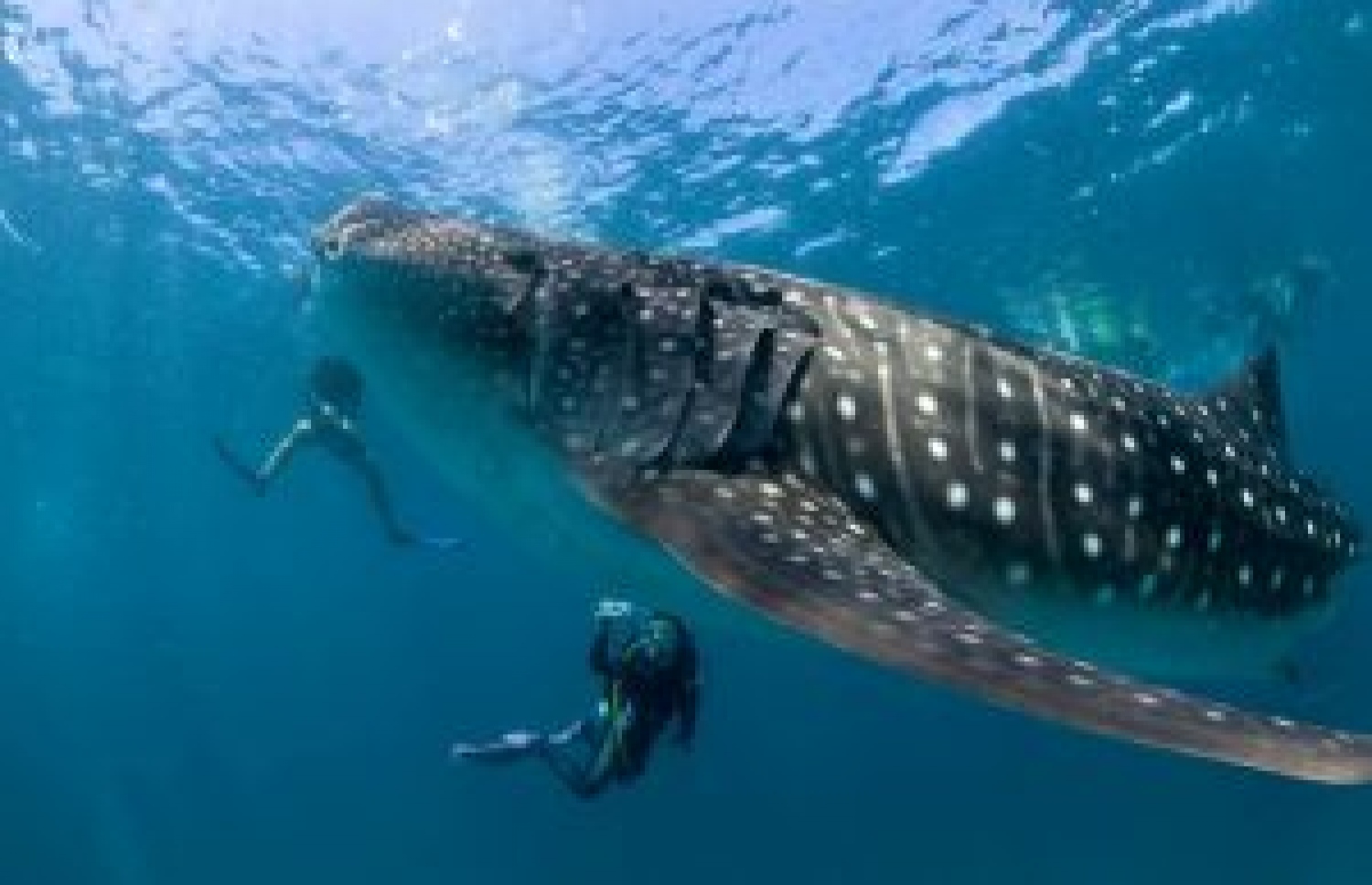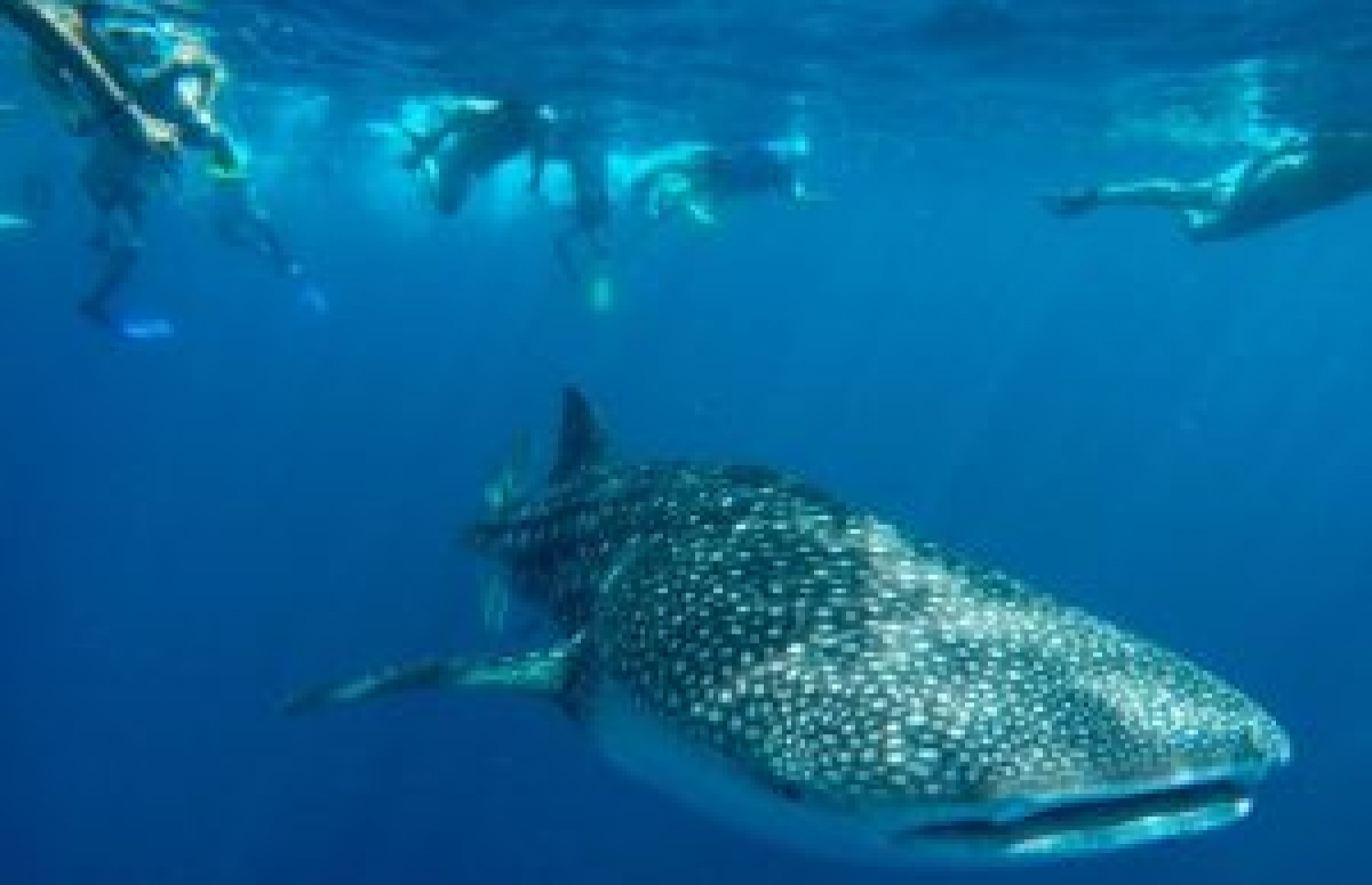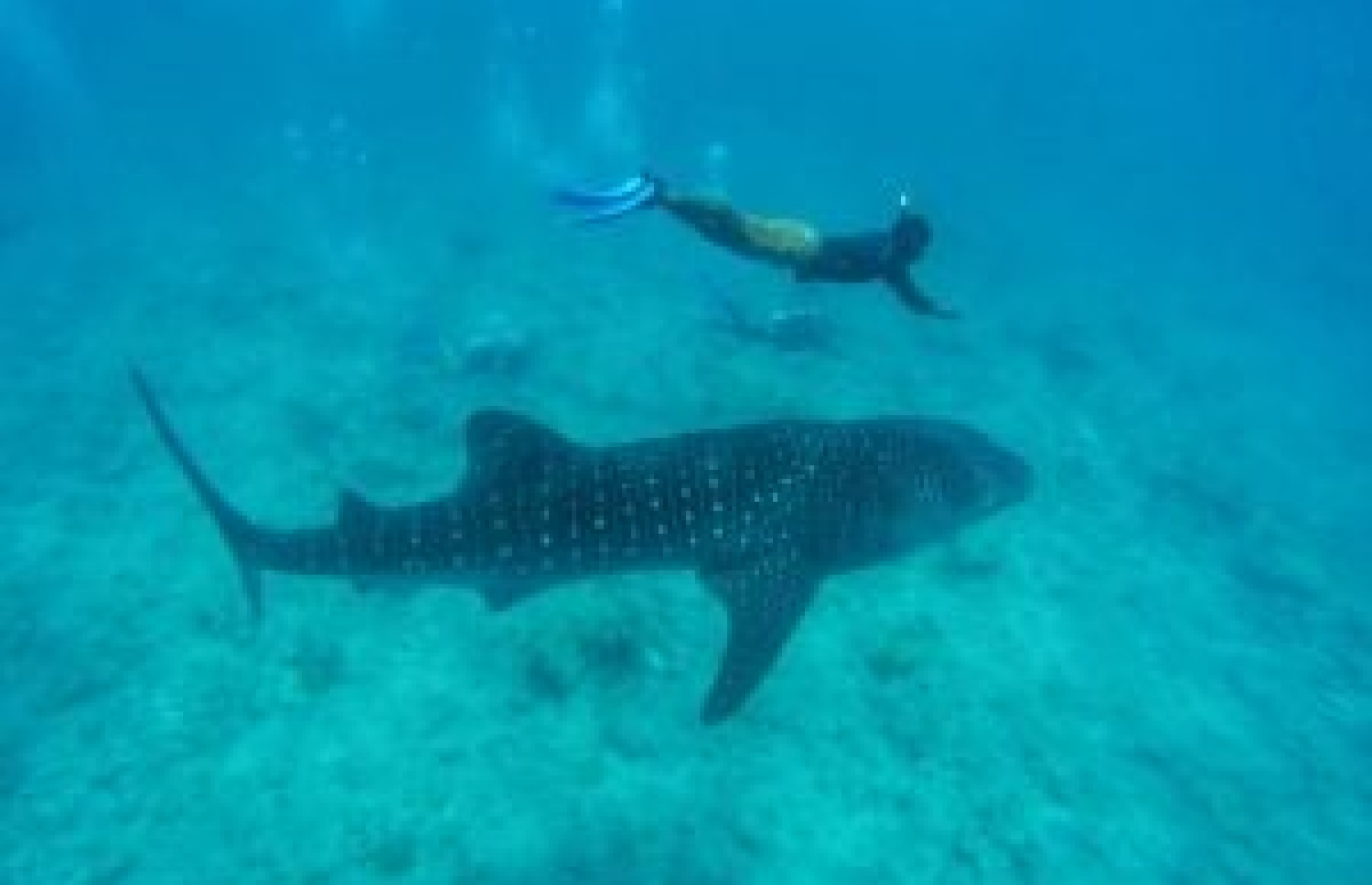What the Maldives lacks in land mass, it more than makes up for in its vast expanse of ocean teeming with coral formations and marine life. The general population of the nation has glimpsed but a small fraction of the beauty lurking beneath these waters which has long since established the island nation as a top diving spot in the world. From small sprats, cardinalfish to the marlin, waboo and several species of sharks, this small patch of the Indian Ocean is known for its rich biodiversity, the king of which is the whale shark.
The largest fish in the sea and a protected endangered species, whale sharks frequent the waters of a few tropical countries including the Maldives. Their sightings have sparked a distinct brand of tourism, luring countless tourists that make brief sojourns to the island nation solely for the pleasure of sighting these majestic creatures.
There are two main whale shark sighting spots in the nation. The first is the well-known UNESCO Biosphere Reserve of Hanifaru Bay in Baa atoll while the second is the marine protected area off the coast of Maamigili island in Alif Dhaal atoll, also known as South Ari atoll. The latter in particular is considered a special zone as whale shark sightings take place all year round, unlike Hanifaru Bay where sightings occur in the southwest monsoon.

“There is no particular season of the year to spot whale sharks in this area [Maamigili]; they can be seen anytime, which is why this region is so popular. Tourists from resorts in [capital] Male atoll even travel here by seaplane [just to see the whale sharks]. So do some from Baa atoll,” said Sun Island Resort’s Water Sports Assistant Manager Ali Mahir as he shed light on the popularity of Maamigili Marine Protected Area (MPA).
Stressing the massive size of the whale sharks which average around 30 feet, he remarked, “There are times when people jump into the sea and immediately climb back aboard the boat [after seeing them].”
Whale shark sighting is an expensive brand of tourism in the Maldives. Tourists often have to pay hefty amounts for safaris and boats to take them on these excursions.
However, the actions of a few have begun to leave negative repercussions on this trade. The high prices paid by tourists on these excursions are occasionally seen going to waste and, consequently, the possibility of whale shark tourism in the Maldives losing its allure has appeared on the horizon.
Whale shark sightings in Maamigili MPA appear to have come to an abrupt halt. The creatures that usually surface in the mornings, which used to bring 20-30 boats of tourists out to sea on excursions daily, are no longer to be seen after the sun rises.

Mahir explained the cause of this change, saying, “Whale sharks usually surface at certain times of the day, so boats start coming out to this area from dawn onwards. But what some of us are doing now is, they bring safari cruises out here at night and shine huge flood lights onto the sea. As a result, the whale sharks now come up at night. This is what people on safaris are doing.”
According to Mahir, whale sharks swim near the surface at certain times of the day in accordance with their natural and biological systems.
“But now, we’re messing up those systems by lighting up the ocean surface at night to make it look like day. [The whale sharks] start coming up thinking it is morning, but as a result, they’re coming up at night and not during the day anymore.”
The domino effect set in motion by these actions of safaris include losses to the reputation of whale shark tourism in the area. The tourists who pay to go on these pricey excursions are left disappointed and dissatisfied, their money gone to waste on whale sharks that ultimately do not appear.

Another danger posed to whale sharks is when excursions put too many divers in close vicinity with whale sharks in the same area.
“The people who take tourists to spot whale sharks on boats, what they do is, as soon as a whale shark appears, they get all the tourists on board into the sea to go snorkelling and take pictures. On some days, 200-300 people jump into the same area at the same time to look at whale sharks. Imagine what it would be like. On one hand there are so many people snorkelling on the surface, while on the other are those who dive down close to the whale sharks,” said Mahir.
The collective result of these unfortunate actions is that whale shark sightings have come to a halt in the Maamigili MPA. According to some sources, it has been over a month and a half since whale sharks were last spotted in the area.
Mahir believes that this situation has been brought about by the disruptions caused to the whale sharks’ natural system of lifestyle. He declared that there should be regulations to prevent such circumstances from occurring.
“We need a system like the one in Baa atoll’s Biosphere Reserve. Though there are rules and regulations, we need someone to monitor and keep an eye on things. It won’t do to leave something so delicate and fragile for people to do with as they please.”

Meanwhile, a dive instructor of a safari cruise admitted that using flood lights to spot whale sharks at night is a common act as of late.
“When the lights are lit, small fish come up to the surface and whale sharks follow to eat them. Even last week, [whale sharks] were spotted in Huvadhoo atoll and near Thaa atoll with flood lights at night.”
However, the dive instructor declared that flood lights would not be used near Maamigili MPA. According to the instructor, possible reasons for the sudden stop in whale shark sightings near Maamigili can be attributed to changes in ocean currents during this year’s northeast monsoon, and the ongoing land reclamation of Bodu Finolhu island in the area.
Apart from the capital Male atoll, South Ari atoll has the highest number of tourist resorts in the Maldives. While the whale shark is a spectacular example of the richness of the nation’s biodiversity in this atoll, leaving it to be wrung dry by greedy hands threatens not only tourism in South Ari atoll and the Maldives in general, but the safety and protection of its natural marine life as well. Should things be left in these dire circumstances without proper intervention, we may see the end of a beautiful gift of nature in the coming days.